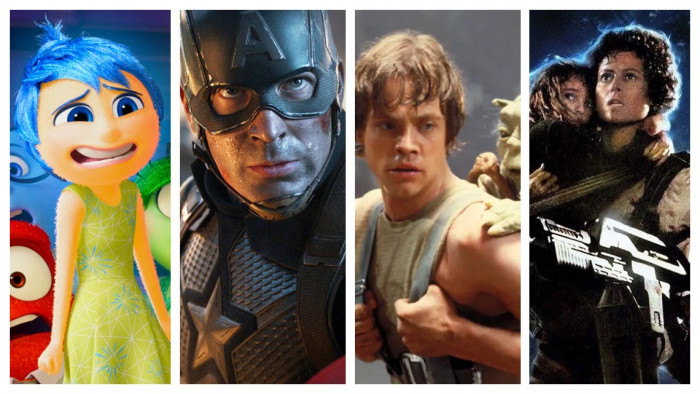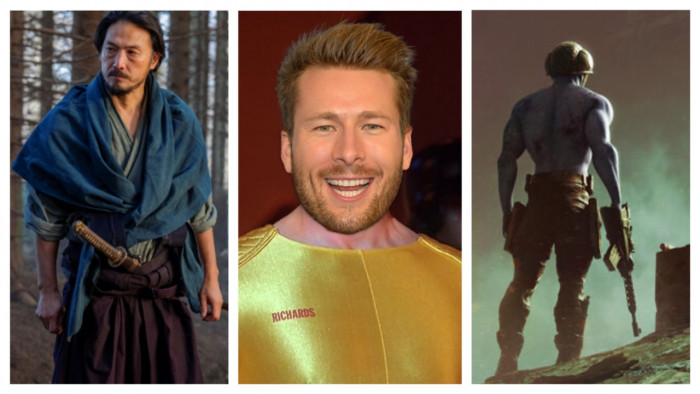How Christopher Nolan's first film set the blueprint for his career
His low-budget 1999 debut 'Following' helps us understand how the director developed his style


Just a fortnight after its premiere, Christopher Nolan’s newest film Dunkirk had already recouped its $100m budget. From the Dark Knight trilogy to Inception and The Prestige, the British director has long been synonymous with big-budget spectacles that not only make bank at the box office, but receives widespread acclaim from the critics, too. But it was Following, his first feature-length film made for just a few thousand pounds, that laid the foundations for the two decades of brilliance that followed.
Filmed in black and white with relatively few takes and a running time of just 70 minutes, and without any big names attached (leads Jeremy Theobald and Alex Haw were both make their feature-length debuts), Following is necessarily tight for budget reasons. Despite the restricted production values, it still manages to introduce traits of character and storytelling which have been a mainstay of Nolan’s films from Memento through to Interstellar.
Theobald is credited as ‘The Young Man’, one of a number of consciously simple credits alongside ‘The Blonde’, ‘The Policeman’ and ‘The Bald Guy’. Aside from the main characters, few others appear and even fewer are given dialogue, filtering into a film which is minimalist both in setting and execution. Part of the appeal of this simplicity comes from the way it allows each of these characters to remain largely interchangeable, defined by their relationship with the film’s sole named character – Cobb (Alex Haw) – whose signature move involves breaking into others’ spaces and taking something personal to them. Now, where have we heard that before...

“The following is my explanation,” begins The Young Man, in a simple act of wordplay which shapes the next hour or so.
It introduces a fairly simple duality – the first interpretation of ‘following’ is the pursuit of strangers carried out by the character, a budding writer, ostensibly as research. The second ‘following’ concerns the linearity of time, and whether the scenes follow each other chronologically. Without the backing for the breathtaking visuals and elaborate set-pieces seen Inception and Interstellar, Nolan is forced to do less with more. This led him to play around with linearity, almost reverse-engineering the film from its finale.
Through this, the foundations are laid for Nolan’s future manipulation of time in the aforementioned films, particularly Memento where the reverse-chronological narrative pushes the plot forward (or backwards). The concept of defining the ending first and working out the steps to arrive there is not exclusive to Nolan, of course. Yet it has become such a characteristic of his film-making that it prompts other motifs to develop around it: motifs which then, in turn, insert themselves into his later work. While Dunkirk offers a natural conclusion, namely a return to a Britain, it is by no means the only Nolan film to zone in on what feels like a predetermined event.

In an interview with French magazine Premiere, Nolan explains: “I did not want to go through the dialogue [or] tell the story of my characters. The problem is not who they are, who they claim to be, or where they come from. The only question I was interested in was: Will they get out of it?”
Following’s setup ensures we know nothing about the background of the characters beyond the narrow lens of what the film’s protagonist knows – and we are immediately made aware that he is an unreliable narrator. We don’t care about his fate, but we are forced to on behalf of something approaching narrative closure.
Yet so many individual stories remain deliberately incomplete and ambiguous. Sympathy (or otherwise) towards the lead in Following comes from the audience’s individual interpretations of the level to which his fate is deserved, and the extent to which they can extend sympathy towards someone who is deliberately only half-formed.
As Oliver Franklin-Wallis of Wiredwrites in his 2014 review of Interstellar, “…this is Nolan's talent as a filmmaker: he works with the power of suggestion, and leaves spaces for the audiences to fill with their imagination”.
Yet Following – despite existing in arguably Nolan’s most ‘normal’ surroundings – is in some ways more incomplete than those set in the information vacuum of war, the communication vacuum of space, or the normal-rules-don’t-apply world of dreams.

Nolan’s talent often lies in giving the worlds of his films as much personality as the individuals who occupy them. In Dunkirk, the beach is as well-developed a character as the nameless soldiers, airmen, and naval troops whose lives are mapped by its perimeter for most of the 106 minutes. Similarly, the intricate mapping of the dream worlds in Inception have far more depth and consideration than the rest of the cast (save, perhaps, Leonardo DiCaprio’s Cobb), while Memento devotes itself to piecing together an almost literal blank slate of Leonard Shelby’s memory of his own past.
Nolan’s work often occupies an uncertain world, but one that is at its heart relatively uncomplicated from a human perspective. Central to it all is a lack of trust, be it in other people, one’s surroundings, or one’s own mind, as if forcing characters to port sensibilities from their own worlds into one which is both unfamiliar and unexpected.
In the Premiere interview, he directly addresses how swathes of information within the film’s confines are deliberately left incomplete, saying “Someone who arrived on the beach in May 1940 had no idea of the number, the facts, any historical perspective and that, it must have been terrifying”.
He almost treats characters like external viewers at times, as though they’re as clueless as the audience, and this is a technique honed in Following. It offers the purest example of a deliberately incomplete narrative in its early scenes, withholding information which cannot exist beyond the mind of its protagonist, in much the same way as Interstellar’s denouement requires Jessica Chastain’s Murphy to discover something it would be impossible for her character to have known at the beginning of the film.
Here, whether a character is told this information or whether they pick it up themselves is less important than one might think, provided the means by which they learn is presented convincingly. Theobald’s character in Following is as unreliable himself, and is at the behest of other, similarly unreliable sources – a contrast to the precision of science in Interstellar (whether that science holds up in the ‘real world’ is immaterial) – but far more in line with the web of unreliability that is Inception or the guesswork and necessary mistrust which permeates Dunkirk.

Plenty of directors’ early work can be considered something of an origin story: Martin Scorsese’s Mean Streets tackles some of the issues of morality in and around organised crime which recur in his more celebrated later films, while stylistic traits which have come to define the likes of Wes Anderson and Kevin Smith can be seen in their rawest form in Bottle Rocket and Clerks respectively.
However, even these examples don’t have the same spider-like reach as Following: not only do its strengths get revisited later in the Nolan canon, but its flaws are acknowledged and corrected almost in real-time over the course of nearly two decades. That said, it isn’t exposed for it’s pared-down budget. While some of his more elaborate concepts set outside our universe require a more detailed set of blueprints unachievable within next-to-no money, even the most polished reboot of Following would require only a few changes from the original.
Following begins with a writer of fiction explaining his methods, and as it plays out we watch another writer – Nolan himself – play around with layers of truth and falsehood: both in his own storytelling and that of the man who, at least on a surface level, appears to be the protagonist. And, as well as mapping out what follows in his filmography, it maps out the direction Nolan takes himself in plotting out the thematic movement across the next 19 years.
How’s that for a Nolan-esque twist?
Latest
Related Reviews and Shortlists


The 10 best war movies of the 21st century








